Greece, Archaic Greece (800-480 B.C.)
In the seventh century, the Greeks started trading extensively with Egypt. Greeks also served as mercenaries in Egyptian armies. The Egyptian influence on sculpture and architecture became palpable in Greece. Before this time only wooden sculpture was
produced in Greece, most of it of a religious nature. Life-sized or larger stone sculpture started to be made in Greece during the Archaic period, probably in about 750 B.C. The overall look and stiff, striding
stances, were deeply influenced by Egyptian statuary. Over time, the Greeks became more adept at showing the human body in motion, in less formulaic stances.
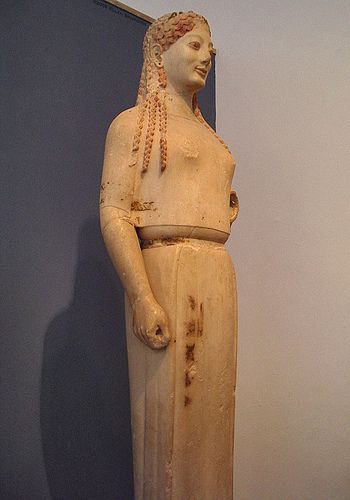
Peplos Kore, ca. 540 B.C. "peplos" refers to the woolen dress she is wearing. Like her male counterpart, this is frontal and freestanding, however, most male figures were nude. Acropolis Museum, Athens, Greece.

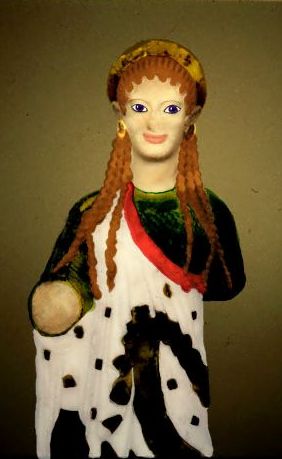
In ancient times, statues were realistically painted. When the Peplos Kore was excavated, it still had traces of reddish paint. Temples often used white marble, but decorations were added at the capital of a column. Here, a plaster cast has been painted with a scholar's best idea about how it may have looked in the original. Height 129 cm., Museum of Classical Antiquities, Cambridge University, U.K.
The Babylonians (ca. 3000 B.C.) were the first to carve gems to be used as seals. Often the Greeks engraved gems to be used as official seals. In the seals of the Archaic period, Orientalizing
influences can be seen, for instance the prevalence of scarabs and sometimes even the Egyptian goddess Isis. Animals and monsters were common subjects as were humans with animal heads. The overwhelming
number of seals from the sixth century B.C. suggests that the use of seals must have become common in Greece at that time.

Gem engraved with Lion, ca. 500 B.C.; 3/8 x ½ x 7/16 inches; J. Paul Getty Museum of Art, Los Angeles, CA
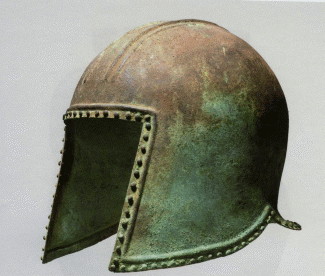
Helmut, bronze, Greek, ca. 500 B.C.; decorative studs,
cheek-pieces, flange; 20.2 cm.

Amphora, buff-ware, Cyprus, ca. 7th century B.C., 68.9 cm.
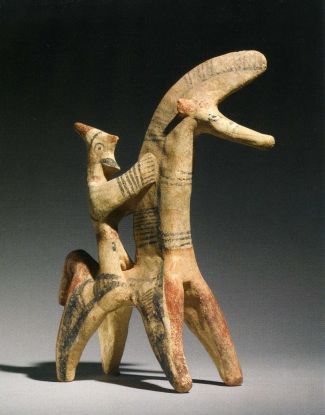
Horse and Rider; terracotta, Cyprus; 7th century B.C.; 24.5 cm.
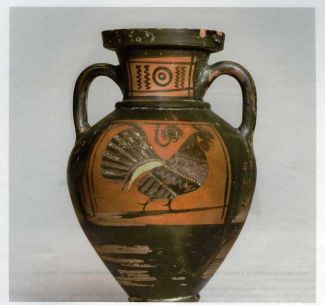
Amphora, black figure, Attic (Athens); rooster painted with purple accents with palmette above its neck; ca. 560 B.C.; 30.8 cm.

Horse, bronze statuette, Greek, ca. 750 B.C.; 8.3 cm.
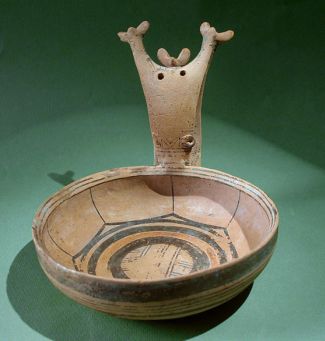
Kathos, Daunian, terracotta, painted, ca. 550 B.C.; the three animal heads on the handle are meant to secure a leather strap; 15.3 cm.
Subtopic: Greek Archaic Pottery
|